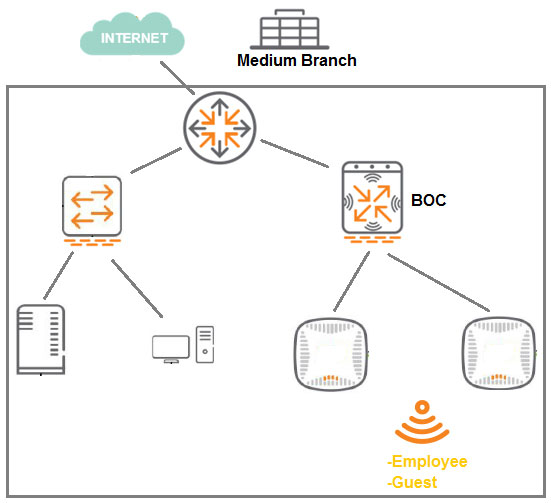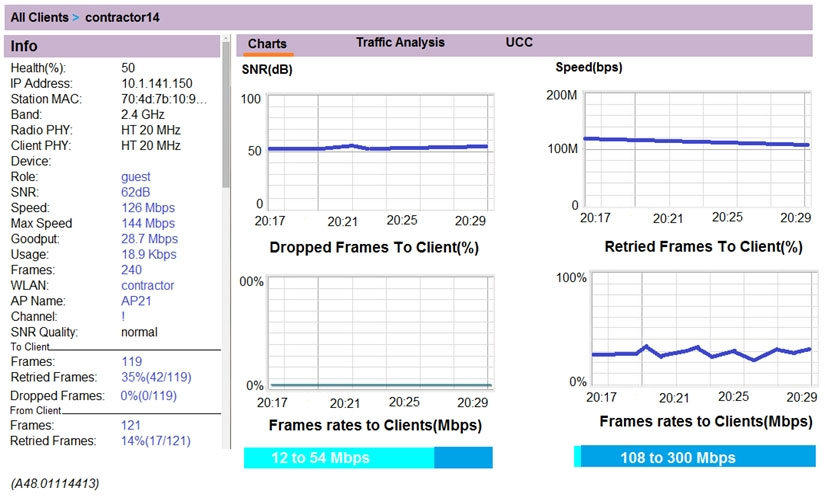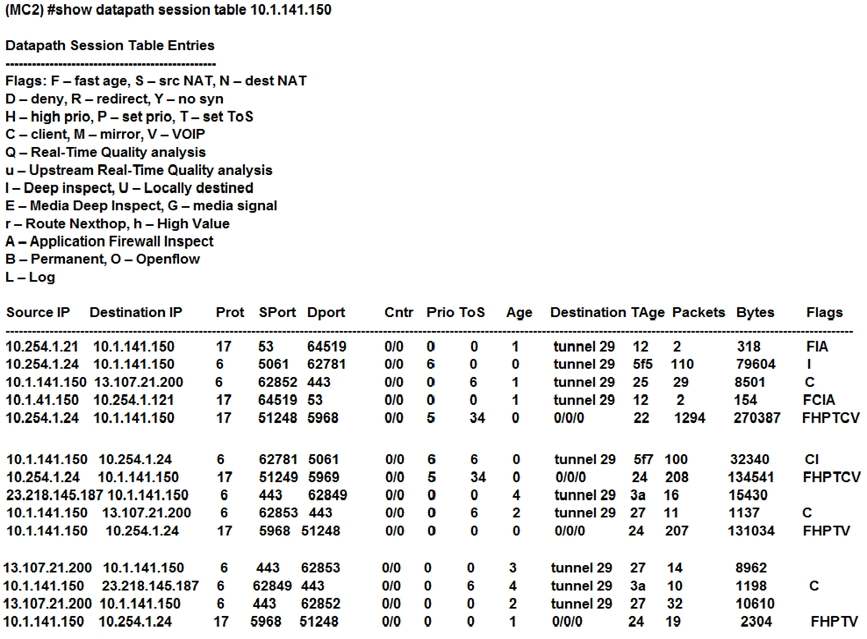HP HPE6-A48 Exam Practice Questions (P. 2)
- Full Access (61 questions)
- Six months of Premium Access
- Access to one million comments
- Seamless ChatGPT Integration
- Ability to download PDF files
- Anki Flashcard files for revision
- No Captcha & No AdSense
- Advanced Exam Configuration
Question #6
Refer to the exhibit.

A network administrator adds a Mobility Controller (MC) in the /mm level and notices that the device does not show up in the managed networks hierarchy. The network administrator accesses the CLI, executes the show switches command, and obtains the output shown in the exhibit.
What is the reason that the MC does not appear as a managed device in the hierarchy?

A network administrator adds a Mobility Controller (MC) in the /mm level and notices that the device does not show up in the managed networks hierarchy. The network administrator accesses the CLI, executes the show switches command, and obtains the output shown in the exhibit.
What is the reason that the MC does not appear as a managed device in the hierarchy?
- AThe network administrator added the device using the wrong Pre=shared Key (PSK).
- BThe digital certificate of the MC is not trusted by the MM.
- CThe IP address of the MC does not match the one that was defined in the MM.
- DThe network administrator has not moved the device into a group yet.
Correct Answer:
B
B
send
light_mode
delete
Question #7
Refer to the exhibit.

A 7008 Branch Office Controller (BOC) is deployed in a remote office behind a core router. This core router does not support 802.1q encapsulation. The Mobility
Controller (MC) is the gateway for two tunneling mode SSIDs, as shown in the exhibit.
Which two different configuration options ensure that wireless users are able to reach the branch network through the router? (Select two.)

A 7008 Branch Office Controller (BOC) is deployed in a remote office behind a core router. This core router does not support 802.1q encapsulation. The Mobility
Controller (MC) is the gateway for two tunneling mode SSIDs, as shown in the exhibit.
Which two different configuration options ensure that wireless users are able to reach the branch network through the router? (Select two.)
- AConfigure all ports of the BOC as access ports on the controller VLAN, and change the gateway of clients to the core router IP.
- BConfigure the uplink of the BOC as an access port on the controller VLAN, and enable NAT for the SSID VLANs.
- CConfigure the uplink of the BOC as a trunk port, tagging the controller and the SSID VLANs, and enable NAT for the SSID VLANs.
- DConfigure the uplink of the BOC as an access port on the controller VLAN, and add static router in the router for the SSID VLAN subnets.
- EConfigure the uplink of the BOC as a trunk port that permits the controller and the SSID VLANs. The controller VLAN must be native.
Correct Answer:
BD
BD
send
light_mode
delete
Question #8
Refer to the exhibit.

A user reports show response time to a network administrator and suggests that there might be a problem with the WLAN. The user's laptop supports 802.11n in the 2.4 GHz band only. The network administrator finds the user on the Mobility Master (MM) and reviews the output shown in the exhibit.
What can the network administrator conclude after analyzing the data?

A user reports show response time to a network administrator and suggests that there might be a problem with the WLAN. The user's laptop supports 802.11n in the 2.4 GHz band only. The network administrator finds the user on the Mobility Master (MM) and reviews the output shown in the exhibit.
What can the network administrator conclude after analyzing the data?
- AClient health is low, and retried frames are high. It is possible there is high channel utilization.
- BClient health is low, but SNR is high. It is possible data in the dashboard is not accurate and needs to be updated.
- CThe speed is good. Client health seems to be related to a problem with the client NIC.
- DThe network is low because of low SNR. TX power must be increased in both the client and the AP.
Correct Answer:
B
B
send
light_mode
delete
Question #9
A customer with a multi-controller network upgrades the ArubaOS from 6.4 to 8. The customer's clients must be able to move between different locations of the campus without disconnecting their applications, when roaming or if there are Mobility Controller (MC) failures. The customer also wants to have full control of the users, and be able to change their session properties from a RADIUS server.
Which steps must the network consultant include in the implementation plan to meet these requirements?
Which steps must the network consultant include in the implementation plan to meet these requirements?
- A1. Create a controller cluster profile that contains the management and VRRP IP addresses of each member. 2. Apply the profile to all MCs in the cluster. 3. Confirm that the cluster is L2 connected.
- B1. Configure a VRRP instance for all MCs 2. Create a controller cluster profile that contains the management IP and VIP addresses of each MC. 3. Apply the profile to all MCs in the cluster. 4. Confirm that the cluster is L2 connected.
- C1. Configure a VRRP instance for each MC. 2. Create a controller cluster profile that contains the management IP of each member. 3. Apply the profile to all MCs in the cluster. 4. Confirm that the cluster is L3 connected.
- D1. Create a controller cluster profile that contains the management and VRRP IP addresses of each member. 2. Apply the profile to the cluster leader. 3. Confirm that the cluster is L2 connected.
Correct Answer:
D
D
send
light_mode
delete
Question #10
Refer to the exhibit.

A network administrator deploys DSCP based prioritization in the entire wired network to improve voice quality for a SIP-based IP telephony system used by the company. However, users report that calls they make from the WLAN have poor audio quality, while desktop phones do not experience the same problem. The network administrator makes a test call and looks in the datapath session table.
Based on the output shown in the exhibit, what is one area that the network administrator should focus on?

A network administrator deploys DSCP based prioritization in the entire wired network to improve voice quality for a SIP-based IP telephony system used by the company. However, users report that calls they make from the WLAN have poor audio quality, while desktop phones do not experience the same problem. The network administrator makes a test call and looks in the datapath session table.
Based on the output shown in the exhibit, what is one area that the network administrator should focus on?
- Awireless network congestion
- BWMM support on the WLAN
- CUCC based DSCP correction
- Dwired network congestion
Correct Answer:
D
D
send
light_mode
delete
All Pages
